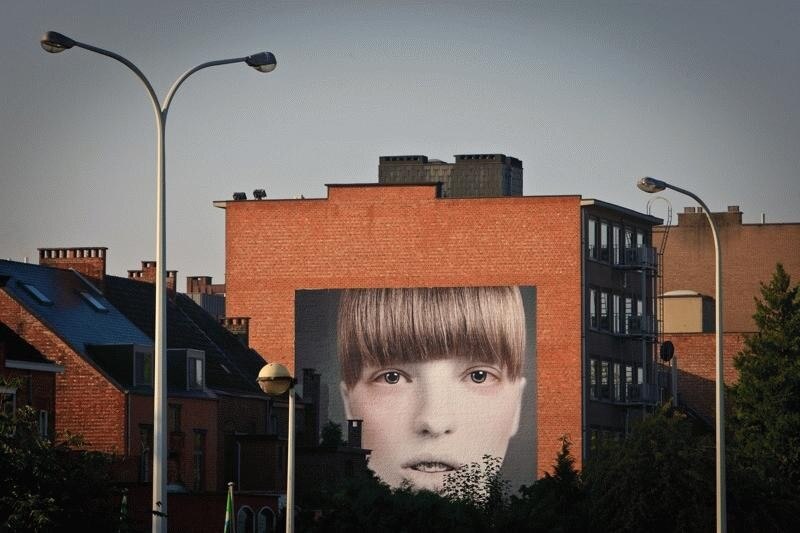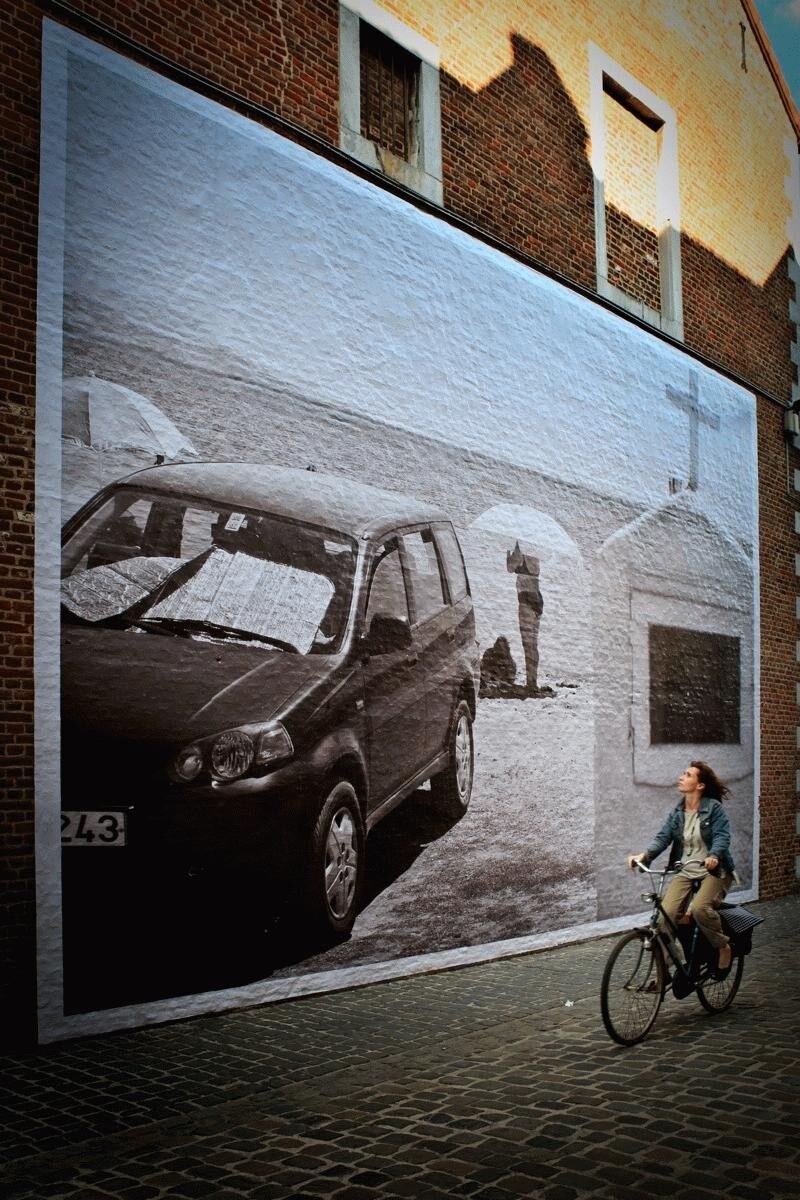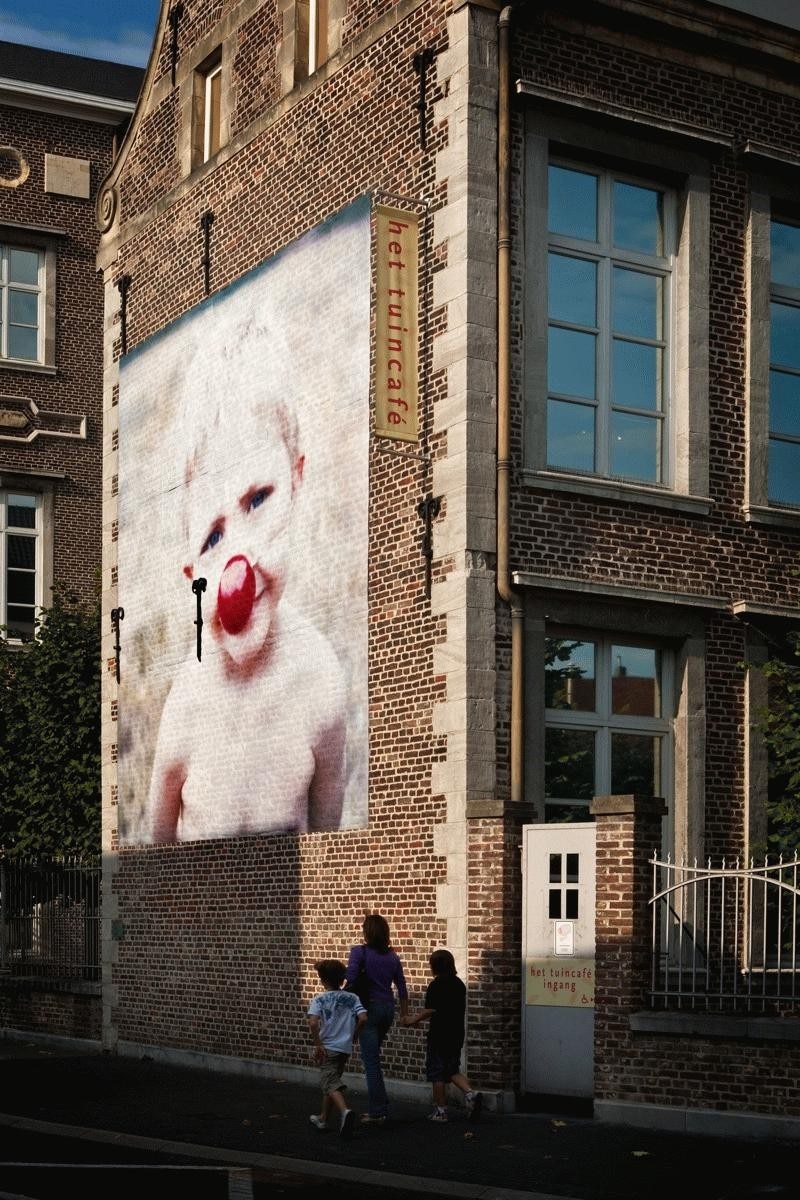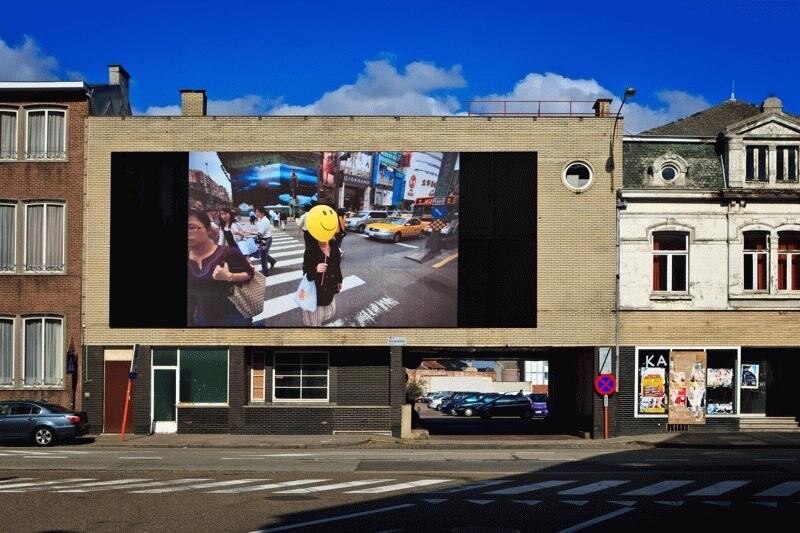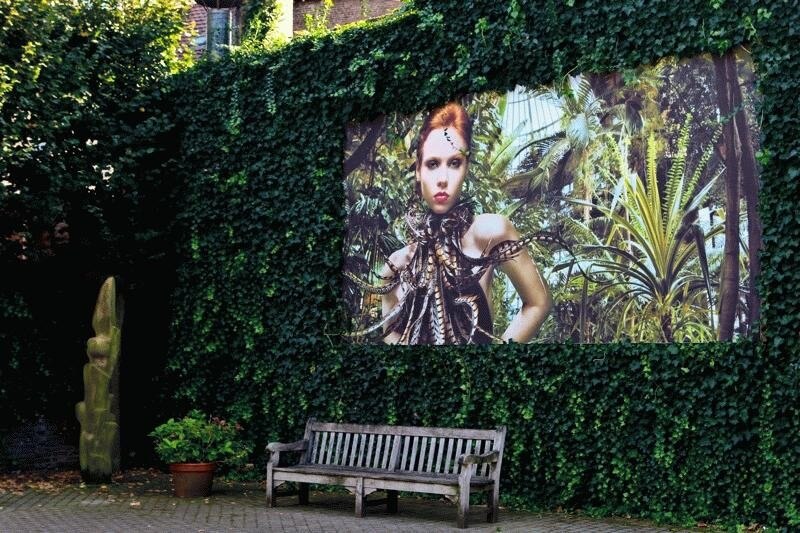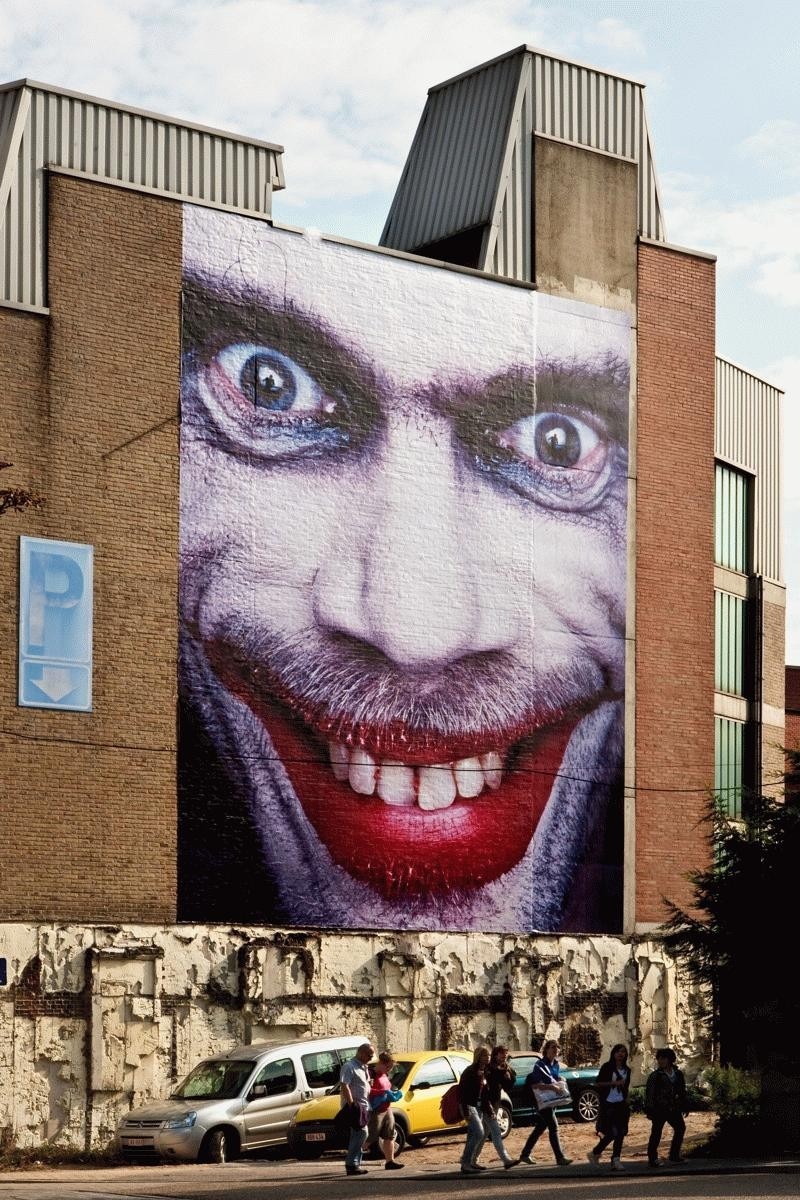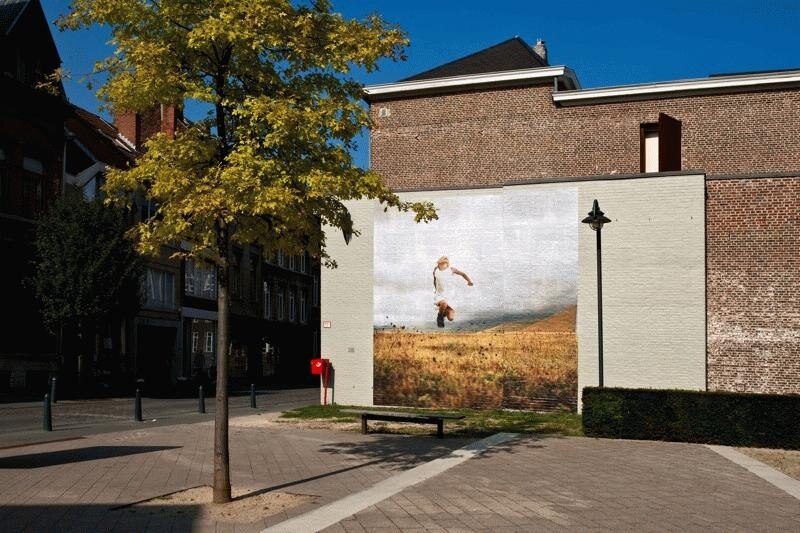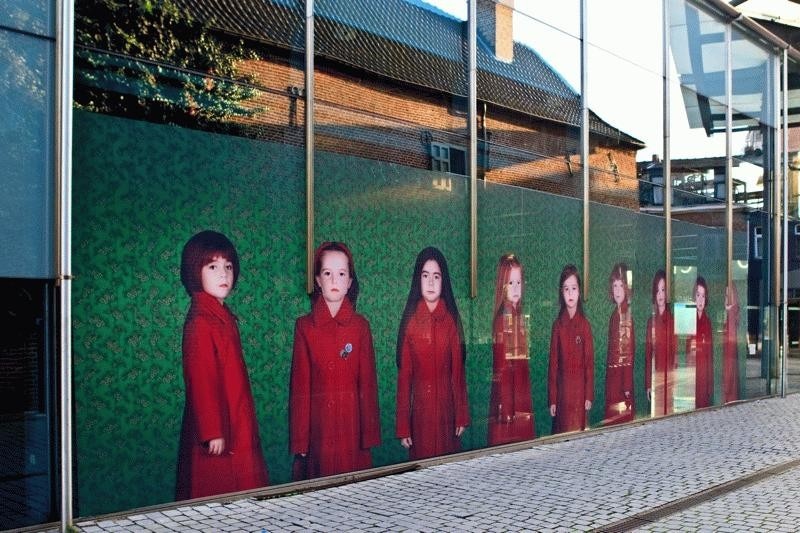SMILE is a creative project that hopes to surprise a broad audience with powerful images that briefly allow us to forget the daily grind, slow down our busy pace of life or simply make us 'smile’. With this project the city of Hasselt wants to step out of museums and exhibit applied art in combination or confrontation with and in public spaces. The same image acquires a different feeling, a different meaning in public spaces.
The project was developed with talented regional, national and international photographers: Lieve Blancquaert, Fabienne Cresens, Oleg Dou, Frank Gielen, Michiel Hendrickx, Jimmy Kets, Ellen Kooi, Erwin Olaf, Birgit Stulens, Carlo Valkenborgh, Ruud van Empel, Philippe Vangelooven, Levi van Veluw, Marc Vonstein, and Kimiko Yoshida. These photographers were selected by the creative agency Mooz in consultation with the cultural department of the city of Hasselt.
The works are located on buildings in the city centre of Hasselt: in the commercial centre, along the green boulevard and at approach roads.
Images from above:
Philippe van Gelooven (Hasselt, 1969), The magnificent 9.
Oleg Dou (Moscow, 1983). Dou’s characters lack any individuality. The face is dissected down to the tiniest detail and subjected with the utmost precision to surgical transformations. Anything that could be reminiscent of flesh is deleted, rubbed out, smoothed away. The transparency of the porcelain skin emphasises the brittleness of pure and imperfect beings. Despite the icy, empty looks, however, this young Russian artist’s “mutants” meticulously retain their sensitivity and humanity.
Michiel Hendryckx (Adinkerke, 1951): this picture was taken in the little Greek village of Kechries, near the mouth of the Corinth Canal. The photograph can also be seen in the autumn in Antwerp’s FotoMuseum, as part of the exhibition, 'Dolen -Onderweg in Europa'.
Lieve Blancquaert (Gent, 1963), Boris. Lieve Blancquaert is chiefly known for her portrait photography. For her, it’s an extra and sometimes stronger form of communication. In this exhibition, she shows a photograph of her little son, Boris. The picture has both comic and sad elements. Two emotions that often go hand in hand. For her, the magic of photography is always in the dialogue between two people. The image is the response and the emphasis of that encounter.
Jimmy Kets (Lier, 1979), Smileys. Kets is an amused outsider. With a generous dose of humour and an eye for detail, he shows us the little things that make us human. Kets snaps unmercifully; his photographs are bursting with colour, but far from disguise the reality. He reveals the (unintentional) humour in human life, but also often the emptiness of existence.
Frank Gielen (Genk, 1964), Laurence. A Belgian- born international photographer with a highly individual style. You can best describe Frank’s work as photographing ‘people in advertising in a fashionable way’, or simply the technical ingenuity of a studio photographer combined with the creative eye of a fashion photographer. Frank carries out assignments for numerous renowned advertising agencies, fashion houses and global brands. His philosophy is clear: An image must have a narrative function, allowing the model to play a role, too. “The challenge as a photographer is not only in producing a technically good picture or staging a concept, but also in inspiring and directing the people you work with”.
Erwin Olaf (Hilversum, 1959). Like the series, Paradise The Club (2001), the series Paradise Portraits (2001) is a critical comment on the party culture of the 1990s. They are images of heavy parties, with women being indecently assaulted by scary clowns. For this series, Erwin Olaf was not only inspired by his own experiences on the party scene, but also by Rubens’ painting, The Abduction of Hippodamia. In Paradise Portraits (2001) he shows a series of close-ups of the faces of beautiful young women and frightening clowns. Sublime in all their horror.
Ellen Kooi (Leeuwarden, 1962). Ellen Kooi’s photographic work mainly features children and young women. Many photographs show a prominent image of individuals placed in an outdoor environment. In this way, Ellen Kooi presents us with the often characteristic Dutch landscapes, but also - and primarily - she shows us images that could easily be interpreted as psychological portraits. Each natural setting, represented centrally, appears to express the internal life of the character.?The inside becomes the outside and vice versa.?The strength of Kooi’s artistic examination lies in her profoundly universal breath. No matter how unusually the situation is portrayed, her photographs seem to imperceptibly fit in with the observer’s own story.
